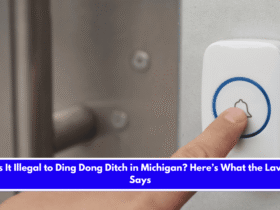Billionaire Tesla CEO Elon Musk is leaving the Trump administration after leading a controversial effort to cut federal government spending. Despite shaking up several agencies, Musk did not achieve the large savings he had promised.
Musk’s Exit and Reaction
A White House official confirmed Musk’s departure late Wednesday. Musk thanked President Donald Trump on social media as his role as a special government employee with the Department of Government Efficiency (DOGE) came to an end.
His exit was sudden and without a formal goodbye with Trump. A source said the decision was made by senior White House staff. Musk left just after publicly criticizing Trump’s tax bill, calling it too expensive and damaging to DOGE’s work.
Some senior White House officials, including Deputy Chief of Staff Stephen Miller, were upset by Musk’s comments. The White House had to reassure Republican senators of Trump’s support for the tax plan.
Musk’s Rise and Challenges in Government
After Trump’s inauguration, Musk quickly became a powerful figure in the administration. Known for his bold style, he even brought a red chainsaw to a political conference, calling it “the chainsaw for bureaucracy.”
Musk claimed DOGE could cut $2 trillion from federal spending, though so far it estimates only $175 billion saved, a figure Reuters could not verify.
Musk was openly critical of federal workers, saying ending “COVID-era” telework would cause many to quit, which he welcomed. Over time, some cabinet members who initially supported him grew wary of his aggressive approach. Trump reminded them that department leaders, not Musk, control staffing.
Musk clashed with top officials, including Secretary of State Marco Rubio, Transportation Secretary Sean Duffy, and Treasury Secretary Scott Bessent. He insulted trade adviser Peter Navarro, who shrugged off the insults.
Musk’s Frustrations and Future Plans
Musk hinted that his government role would end soon and said cutting spending was harder than he expected. In April, he said he would scale back his government work to focus more on Tesla.
“The federal bureaucracy is worse than I thought,” Musk told The Washington Post. “Improving things in D.C. is an uphill battle.”
The Future of DOGE
Musk’s 130-day term with DOGE was due to expire around May 30. The Trump administration says the effort to reduce government size will continue.
Cabinet secretaries are discussing how to keep the work going without upsetting Congress. While some DOGE policies will stay, departments want to regain control of budgets and hiring.
Musk said, “The DOGE mission will only strengthen over time as it becomes a way of life in government.”
Results and Setbacks
Under DOGE, nearly 260,000 federal civilian jobs have been cut — about 12% of the workforce — mainly through retirements, buyouts, and firing threats.
However, DOGE faced problems. Courts sometimes blocked agency cuts, and staff reductions caused delays, higher costs, and loss of expert workers.
The latest conflict was Musk’s public criticism of a Republican tax and budget bill, which upset senior White House staff.
Public and Political Reactions
Musk’s political role has drawn protests and concern from investors. Tesla’s sales and stock price have fallen, leading some to suggest Musk should focus on his company.
Musk defended his position as an unelected official with strong authority from Trump to reform government.
Having spent nearly $300 million supporting Trump and other Republicans, Musk said recently he would reduce his political spending.
“I think I’ve done enough,” Musk said at a forum in Qatar.











Leave a Reply